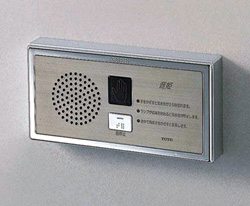Tell me what your toilet habits are, and I will tell you who you are.
I was in the ladies’ room, minding my own business, when I heard someone flushing in the next cubicle. Whooosh, whooosh, whooosh! It’s the sound of flushing, and the flushing lever had been pulled down three times in succession. Three times! How many times does one need to flush human filth down the toilet? Inspite of myself, I couldn’t help but count how many times the person had already flushed, thinking of all the volumes of water going down the drain.
There was a pause. Then suddenly, another whooosh! Ok, enough already! I silently cursed. Think of all the water that’s being wasted, woman! Images of filthy toilets unflushed because of clogged pipes, inadequate water supply or poor water pressure flashed in my mind, as I recalled how things could be back in my country. Back home, one would always find large waste baskets in toilets, simply because nobody should ever flush toilet papers down the toilet. This is a horrid act with dire consequences! Ever watched Ben Stiller in “Along Came Polly”? Aha, now you get the picture. In most public toilets in the Philippines, used toilet papers usually go into the waste basket, not into the toilet. Eww, I know. And this is a rule that I always tend to forget whenever I visit home. I tend to forget that we don’t always have the luxury of efficient toilet flushing systems.

But here in Japan, where water is abundant and toilets flush the way they should, flushing with wanton abandon has been used as a way to “hide” the sounds of “bodily functions.” Here in Japan, women are “very embarrassed by the sounds they make in a toilet.” According to a site I found:
“The Japanese are notoriously fastidious: the daily bath is practiced with near-religious fervor, and walking inside with your shoes on is considered filthy. The Japanese word for clean – “kirei” – also means beautiful.
And what happens in a bathroom stall is, well, among the dirtiest things that humans do.
Going to the toilet has been considered embarrassing and even shameful for women since ancient times in Japan, said Noriji Suzuki, a parasitologist at Kochi University Medical School.
“Sometimes you see people talking to each other over a stall in Western countries, but that would never happen in our culture,” he said.”
More interesting bits of information about toilets and toilet behavior in Japan can be found here.
Fortunately, there are already gadgets like “Oto-Hime” (literally translated as “Sound Princess”) which are now installed in most modern public toilets. Instead of actually flushing the toilet to mask the sound, all you have to do is activate the gadget, usually by placing your hand over the sensor, and it will play a recorded sound of water flushing. And yes, it’s loud enough to cover even the loudest fart you’ll ever make. 🙂 I’ve used these on occasion, especially when I know that the cubicle next to mine is occupied by another person. Unfortunately, one may not always find this in public toilets, particularly in old buildings and establishments. And thus the water flushing habit continues. I think that this is a rather odd cultural behavior. And it’s really not environment-friendly.
Personally I don’t think that the sounds while I perform my “bodily functions” are embarrassing for me – but as a courtesy to the other persons, I use the Oto-Hime. Or in the absence of such a gadget…well, I beat my chest and sing “My Way” to the top of my lungs. Nah, just kidding. C’mon, I’m a Filipino, so I know how to improvise — anything else but flushing precious water down the toilet.
Actually, I only found out about this behavior years after coming here. When I finally realized what those gadgets were for, I could only shake my head at the thought of having made all those junkets to the toilet without any attempts of hiding the sounds. So when the time came around, I oriented my sister about the existence of the Oto-Hime, what it does, and why it is there. However, I never really had the chance to show her what it actually looked like. I just told her that she could find it in the ladies’ room. One time, out of curiosity, she explored the buttons she found inside the public toilet, hoping to find the Oto-Hime I told her about. She found a button, and pressed it.
Nothing happened. There were no sounds. Thinking that she must have pressed the wrong button, she dismissed it. A few minutes later, somebody knocked on her door. When she opened it, there was a guard standing outside. Uh-ohh…what did I do wrong now? she thought.
It turned out that the button she pressed was for emergency calls. Poor sister! The guard realized at once that it was no emergency, just another clueless “gaijin” who made a mistake. She made a quick bow and promptly exited. We all enjoyed a good laugh at that incident. I told her, “Only in Japan, my dear, only in Japan.”